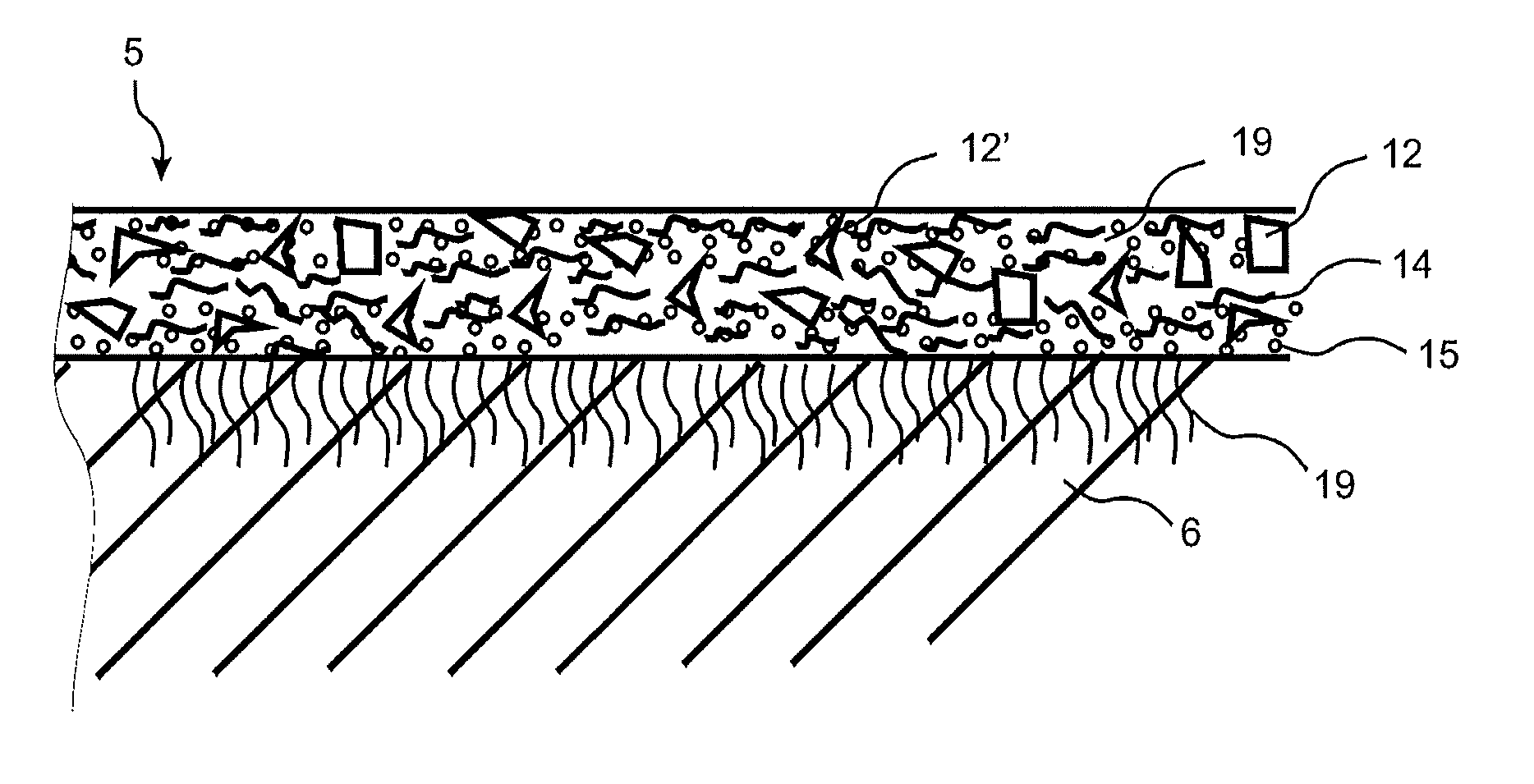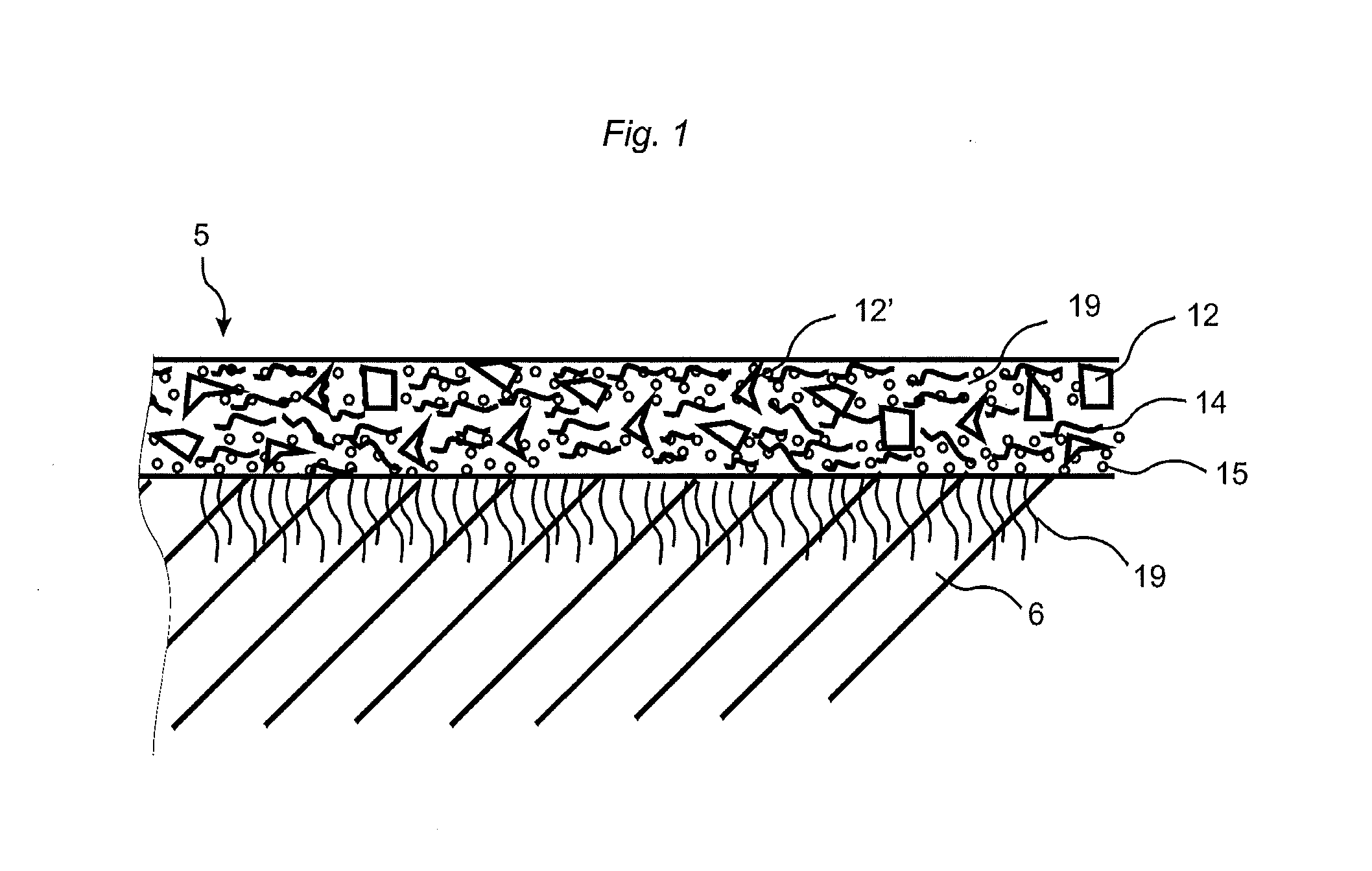Bright coloured surface layer
a technology of wear resistance and surface layer, applied in the direction of transportation and packaging, wood layered products, coatings, etc., can solve the problems of pigment bleed, difficult to achieve the desired colour, discolouring of areas, etc., and achieve the effect of reducing costs
- Summary
- Abstract
- Description
- Claims
- Application Information
AI Technical Summary
Benefits of technology
Problems solved by technology
Method used
Image
Examples
example w1
Bright White Formulation
[0042]On a HDF board with a thickness of 9.8 mm, two backing papers NKR 140 where fixed on backside for balancing, a WFF powder formulation was added, consisting of 40 Wt % refined fiber, 10 Wt % aluminium oxide, 10 Wt % titanium dioxide as pigment and 40 Wt % melamine resin. The WFF powder mix was applied by a so-called scattering machine, which distributed the WFF powder material evenly over the HDF surface. The total amount of WFF powder was 625 g / m2. The WFF powder was fixed on the HDF board by spraying a water solution consisting of 97 Wt % de-ionized water, 1 Wt % BYK-345 (wetting agent added to reduce surface tension) and 2 Wt % of Pat 622 / E (release agent) on the WFF powder.
[0043]The above material was placed into a so-called DPL press. The surface texture consists of a special press plate with hills and valleys with about 300 microns in difference in highest and lowest part. This deep press plate can not be used when pressing DPL and HPL, the melamin...
example r2
Colourful Red Formulation
[0049]On a HDF board with a thickness of 9.8 mm, two backing papers NKR 140 where fixed on backside for balancing, a WFF powder formulation was added, consisting of 42.5 Wt % refined fiber, 10 Wt % aluminium oxide, 5 Wt % Heucosin Spez. Tomatenrot G 10138 as red pigment and 42.5 Wt % melamine resin. The WFF powder mix was applied by a so-called scattering machine, which distributed the WFF powder material evenly over the HDF surface. The totally amount of WFF powder was 625 g / m2. The WFF powder was fixed on the HDF board by spraying a water solution consisting of 97 Wt % de-ionized water, 1 Wt % BYK-345 (wetting agent added to reduce surface tension) and 2 Wt % of Pat 622 / E (release agent) on the WFF powder.
[0050]The above material was placed into a so-called DPL press. The surface texture consists of a special press plate with hills and valleys with about 300 microns in difference in highest and lowest part. This deep press plate can not be used when pressi...
PUM
| Property | Measurement | Unit |
|---|---|---|
| thickness | aaaaa | aaaaa |
| thickness | aaaaa | aaaaa |
| thick | aaaaa | aaaaa |
Abstract
Description
Claims
Application Information
 Login to View More
Login to View More - R&D
- Intellectual Property
- Life Sciences
- Materials
- Tech Scout
- Unparalleled Data Quality
- Higher Quality Content
- 60% Fewer Hallucinations
Browse by: Latest US Patents, China's latest patents, Technical Efficacy Thesaurus, Application Domain, Technology Topic, Popular Technical Reports.
© 2025 PatSnap. All rights reserved.Legal|Privacy policy|Modern Slavery Act Transparency Statement|Sitemap|About US| Contact US: help@patsnap.com


